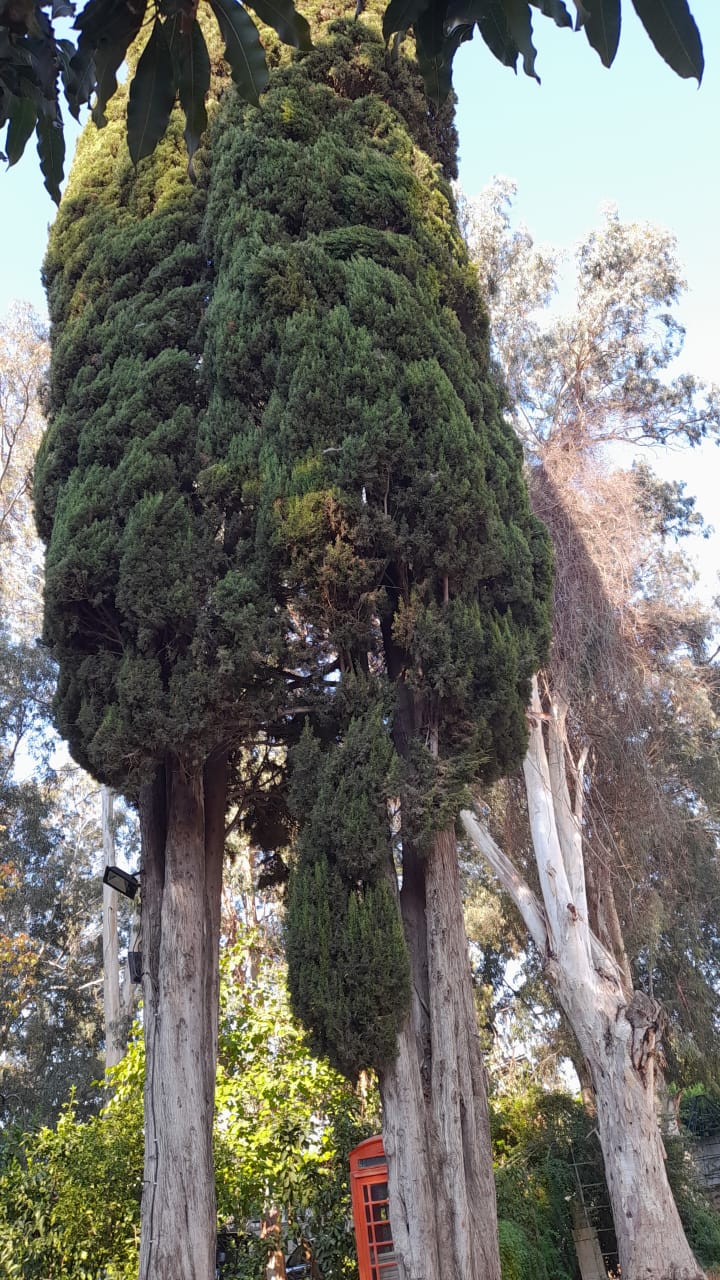Visit Us / Garden
Cypress tree
Cyprès - شجر السرو
Description
Its name derives from the myth of Cyparissos (no link to Cyprus), who received a stag as a gift from Apollo. Cyparissos accidentally kills the animal, which causes him terrible sadness. Apollo then turns Cyparissos into a cypress tree: the sap that escapes from the tree symbolising his tears... As a result, the tree is associated with mourning and death and that is why it is often found in cemeteries.
The large cypress in the garden is at least 80 years old. It survived the war and the many shells and fires that hit the house.
Charles Corm did not see the cypress as a sad tree however, quite the opposite (see poems).

Poem
The Tree’s Great Creed
Look at the Cypress, that great green candle!
How well it draws its branches along its sides,
To soar high up towards the adoring sun,
And how its forehead becomes clearer in the sky!
An absurd prejudice, oblivious to its towering might,
Its invincible greenness and lofty nobility,
Marks it as a grim symbol of death
And to the the grave it is forsaken.
Yet, seeing it, even among the marble tombstones,
It is the cypress alone, this outcast, who more than all the trees
Confirms my faith in eternity!
And if I should one day benefit from its shade,
I join willingly in its serenity
That sings of the strength and power of life…
Published in La Petite Cosmogonie Sentimentale, Collection “Poetic works” – Volume 6, Ed. De la Revue Phénicienne, 1st edition -2004)
The Cypress
The cypress climbs straight up,
Like a noble candle, a grand chandelier;
Grave beneath its dark greeness
It thunders on, towards the skies
Above the hale!
The cypress rises straight,
Like the soaring soul that Heaven has chosen,
Like a cry of hope, the jet of a flame,
Like youth and life!
The cypress ascends
Like pious incense; like the look of faith
Seeking the absolute in God’s infinity!
Symbol of ardour – emotional or physical,
A bit like music
The cypress rises like Love itself!…
December 1939
Published in La Montagne Parfumée, Collection “Poetic works” – Volume 3, Ed. De la Revue Phénicienne, 1st edition -2004



